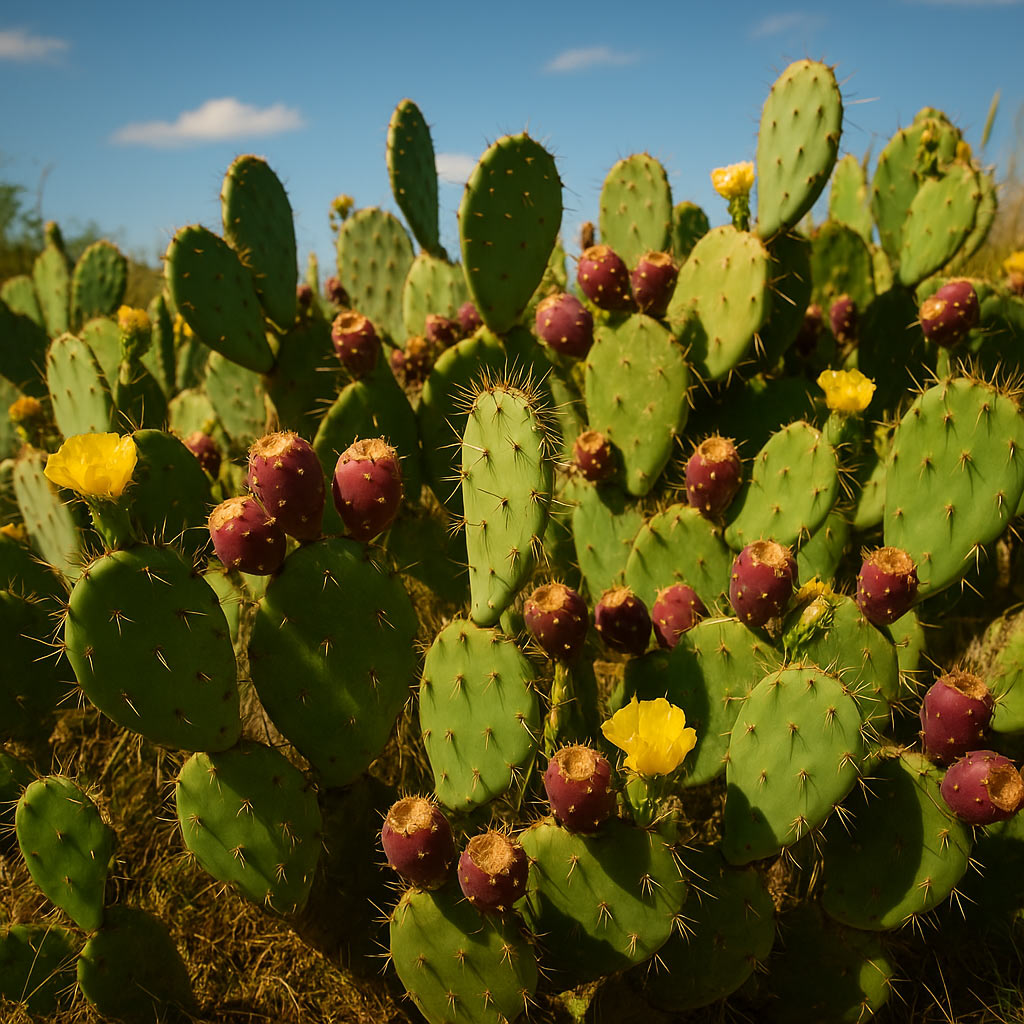If you’ve ever hiked a trail in Florida or wandered a sandy roadside, you may have spotted the prickly pear cactus—its flat, paddle-like pads jutting out like green mittens, often crowned with vibrant yellow or magenta blooms. This humble cactus, Opuntia spp., is more than just a spiny survivor of dry, open landscapes. It’s edible, medicinal, and steeped in history, from Indigenous healing traditions to modern foraging recipes.
Where to Find It
In Central Florida, prickly pear thrives in dry, sandy soils and sunny locations. You’re most likely to encounter it along:
Sandy coastal trails
Disturbed scrubland
Open fields and fence lines
Pinelands and hammock edges
Look for clusters of fleshy pads—some with bright blooms in spring, others bearing vibrant red-purple fruits (called tunas) in late summer or early fall.
Foragers’ Note: Wear gloves and use tongs when harvesting. The pads (called nopales) and the fruits are covered in tiny barbed hairs called glochids that can irritate the skin.
A Cactus with Deep Roots
Prickly pear has long been used by Native American tribes throughout the southern U.S., Mexico, and the Caribbean. The pads were cooked as a vegetable or dried for winter storage, while the fruit was prized for its sweet juice and vibrant color.
Medicinally, the plant was valued for:
Wound care: Poultices made from boiled pads helped treat burns and inflammation.
Blood sugar regulation: Traditionally used in Indigenous medicine for managing blood sugar levels.
Hydration & digestion: Its mucilaginous interior soothes the gut and is rich in water and electrolytes.
Today, science backs many of these benefits. Prickly pear is high in antioxidants, fiber, and vitamin C, and studies suggest it can reduce inflammation and help balance blood sugar.
Recipes to Try
Nopales Sauté
A tangy, slightly tart veggie side with a hint of citrus.
Ingredients:
-
1 cup de-spined and sliced cactus pads (nopales)
-
1 garlic clove, minced
-
1 tbsp olive oil
-
1 tsp lime juice
-
Pinch of salt
Instructions:
Boil sliced nopales for 10 minutes to remove slime. Drain. Sauté in olive oil with garlic until slightly crisp. Finish with lime juice and salt.
Prickly Pear Syrup
Great for cocktails, lemonade, or drizzling over pancakes.
Ingredients:
-
1 cup prickly pear fruit pulp
-
½ cup water
-
½ cup sugar
-
1 tbsp lemon juice
Instructions:
Blend the pulp, strain to remove seeds, then simmer with sugar and water until thickened. Add lemon juice and cool before bottling.
Foraging Tips & Cautions
Always identify carefully. Only harvest from areas free of herbicides or pollution.
Use gloves and a sharp knife to cut both pads and fruits.
Burn or scrape off glochids from the fruit before handling.
Why Grow Your Own?
If you’re eager to integrate more native, resilient edibles into your garden, prickly pear is an excellent addition. It thrives in poor soil, is drought-tolerant, and attracts pollinators when in bloom.
Plant in a sunny, well-drained corner, give it space, and let nature take it from there.
Final Thoughts
The prickly pear is a plant of paradoxes: tough yet healing, spiky yet edible, wild yet beautiful. Whether you’re harvesting nopales for dinner or admiring its sun-soaked silhouette along a sandy trail, this native Florida cactus offers sustenance, tradition, and a story worth rediscovering.

